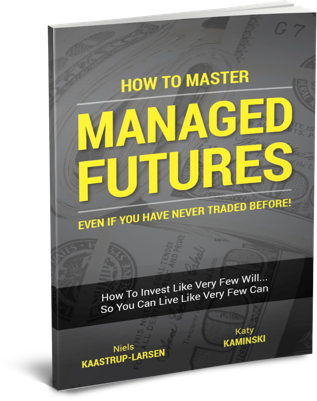Smooth Risk

By Moritz Seibert, edited by Niels Kaastrup-Larsen
The CTA industry has changed a lot during the past ten years. New regulations and increased demand from institutional investors, especially pension funds, have caused many CTAs to change (i) their trading programs and (ii) their business operations.
Instead of representing the core investment philosophy of the manager, it seems that many of today’s trading strategies are designed to suit the investment preferences of large institutional clients: low volatility, small drawdowns of – ideally - short duration, and a consistent return stream uncorrelated to other investments. Obviously, such a “feel-good” program can also make for a great business (steady fee revenue).
However, investors should be careful what they wish for.
"Return-smoothness tends to come at a cost and the risks are often hidden."
The rough side of a smooth return stream
Traditional trend following is the opposite of smooth. Maybe counter intuitive, the roughness of trend following is the primary reason for its robustness, stability and resilience over time. But the lumpy returns make it a trading style that’s very hard to like for most investors (relies on price only, shows more losing than winning trades, almost always in drawdown, high return variability, and so on). Smoothness, in contrast, is much easier to like.
To smooth the performance of a trend following trading system, managers may
- increase portfolio diversification by adding more (different) markets to the portfolio, spreading trading signals across multiple time frames, and expanding the range of entry and exit signals (e.g., by combining breakout and moving average-based trading styles)
- alter the workings of a “rough” trend following model, or
- add non-trend following models to the portfolio.
Out of the above, (a) is a great choice because it adds to the stability of a trend following portfolio, but (b) and (c) tend to come with considerable side effects.
With respect to (b), when altering the design of a trend following trading model with the aim of making its returns more likeable, the risk is that the additional complexity that’s required to develop a system that prevents large losses, reduces drawdowns and takes a higher percentage of winning trades, actually weakens the overall portfolio. That’s because additional trading parameters tend to lessen the sample size and make the system increasingly dependent on past market environments which are unlikely to recur in the future.
"Simplicity on the other hand avoids over-optimization. It increases a system’s robustness at the “cost” of roughness".
Regarding (c), the introduction of non-trend following models to the portfolio (e.g., mean-reversion) can indeed work wonders. However, many of these models don’t represent skill (alpha) and come with hidden risks - especially tail risks. Most mean-reversion models work most of the time and hence a backtest will suggest that they are a nice counterbalance to trend following. What investor’s should understand though is that most of these models include “time bombs”. The question is not if these bombs will explode, but when. And, when they do, the damage will make it clear that these models have been traded at the investor’s expense: the investor has all the downside, but the manager just goes out of business. Long Term Capital Management traded in the markets on somebody else’s dime in the same way.
The above risk does not only apply to mean-reversion but to any system that’s focused on a part of the return distribution where theoretical probabilities are tiny but real-word probabilities are not. These models make for great back-testing, but they tend to be very fragile. Personally, I think that trend following - despite its roughness - is the more honest trade. At least it gives the investor a return ticket from a drawdown and, as a result, it’s fair to say that pure trend following is actually more protective of investor capital than some of the cleanest looking trading systems.
"To be fair, not all non-trend following models are to be dismissed".
There are certainly some good and sustainable ones out there and Kudos to those managers who are trading them for their clients. But when returns look too smooth and Sharpe ratios start to exceed 2 or 3, investors should ask themselves and their “Smooth Operator” (Sade, 1984) why they are invited to participate in the trading program in the first place.
Summary: investors do not necessarily lower their risk by lowering the volatility of their returns. Volatility and risk are two very separate matters. If investors are too risk averse and too keen on obtaining a smooth “all weather” return profile, odds are that at some point they will end up with the opposite.
Most Comprehensive Guide to the Best Investment Books of All Time

Most Comprehensive Guide to the Best Investment Books of All Time
Get the most comprehensive guide to over 300 of the BEST investment books, with insights, and learn from some of the wisest and most accomplished investors in the world. A collection of MUST READ books carefully selected for you. Get it now absolutely FREE!
Get Your FREE Guide HERE!





